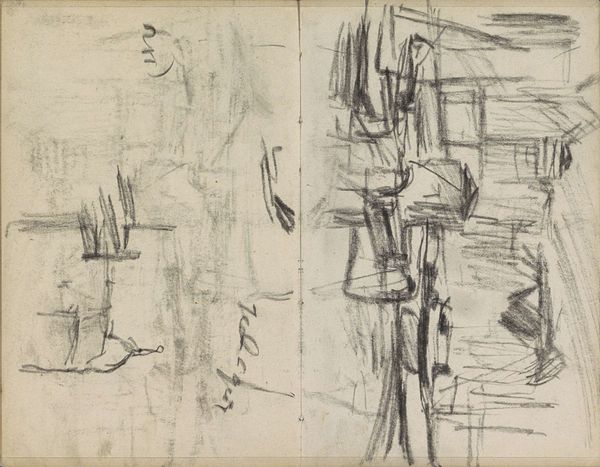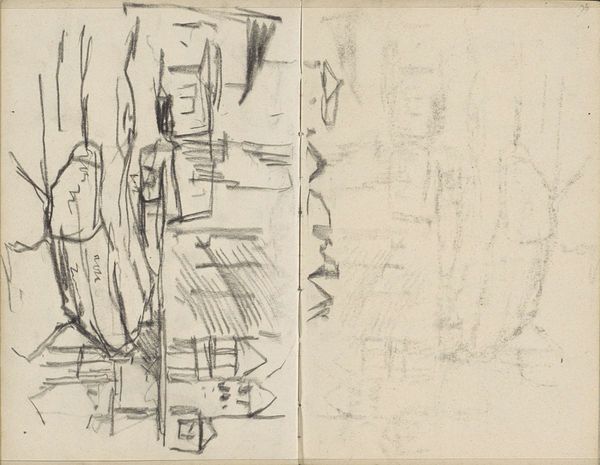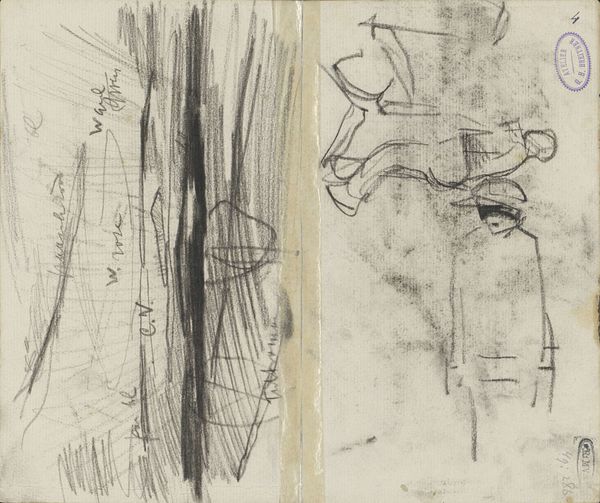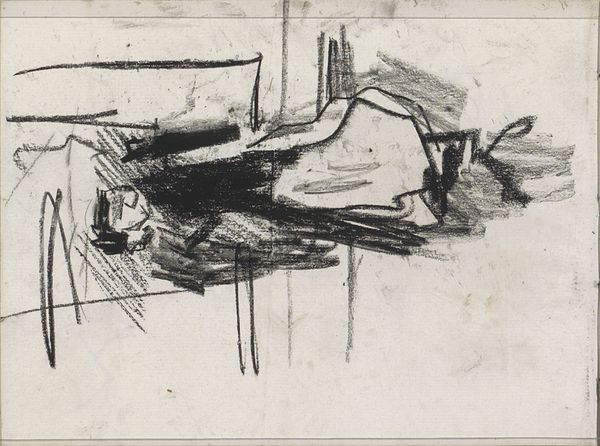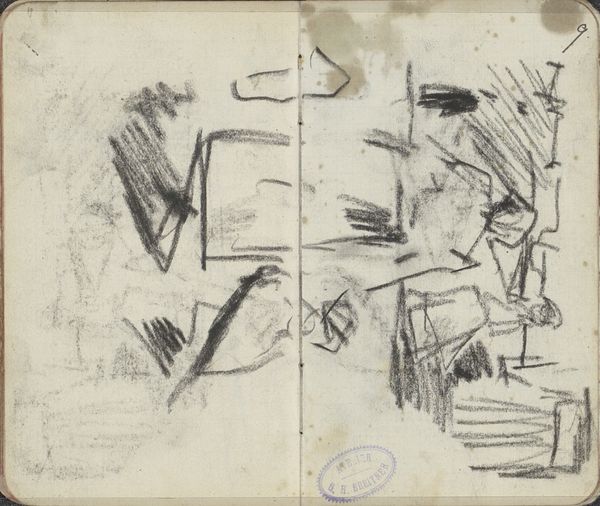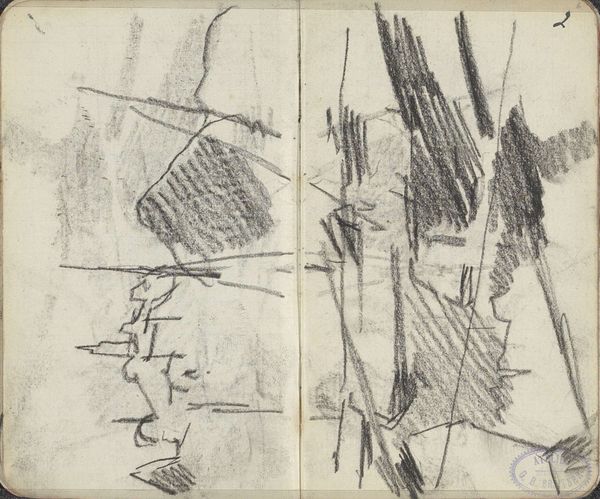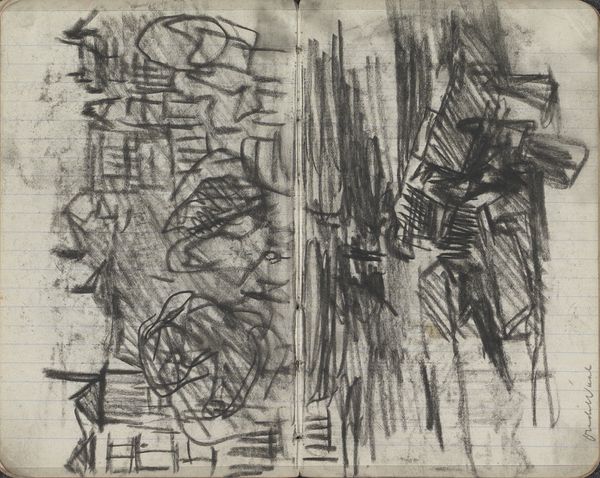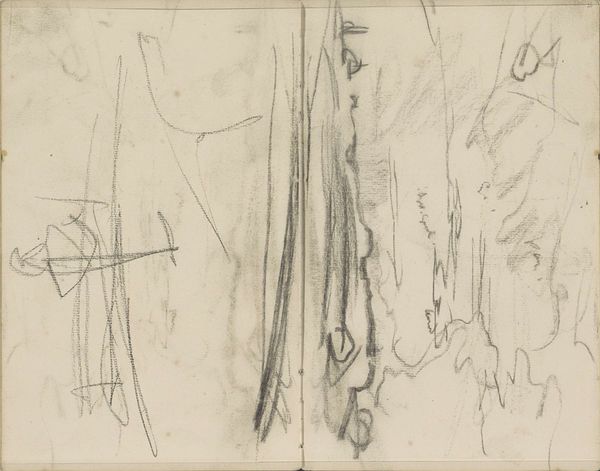
drawing, pencil
#
portrait
#
drawing
#
self-portrait
#
quirky sketch
#
impressionism
#
pen sketch
#
pencil sketch
#
personal sketchbook
#
idea generation sketch
#
sketchwork
#
ink drawing experimentation
#
pen-ink sketch
#
pencil
#
sketchbook drawing
#
sketchbook art
#
realism
Copyright: Rijks Museum: Open Domain
George Hendrik Breitner rendered these Studies van een man en mogelijk een landschap in pencil on paper, sometime before 1923. Notice the hands reaching upwards, a motif resonant through art history. Consider the orant gesture, where hands are raised in supplication, found in early Christian art and ancient Roman depictions of prayer. Breitner’s sketch, though less formal, echoes this primal expression of human yearning and supplication, recurring across cultures and eras. The raising of hands transcends mere religious invocation. It appears in moments of surrender, defense, or desperate appeal. Think of captured figures in Goya's war scenes, their upraised arms symbolizing utter helplessness. Psychologically, this gesture taps into our collective memory of vulnerability, a subconscious plea for deliverance. The meaning of this symbol evolves with each invocation, echoing, but never replicating, its predecessors. It is in this non-linear, cyclical progression that we see how symbols resurface, adapt, and acquire new layers of significance.
Comments
No comments
Be the first to comment and join the conversation on the ultimate creative platform.
